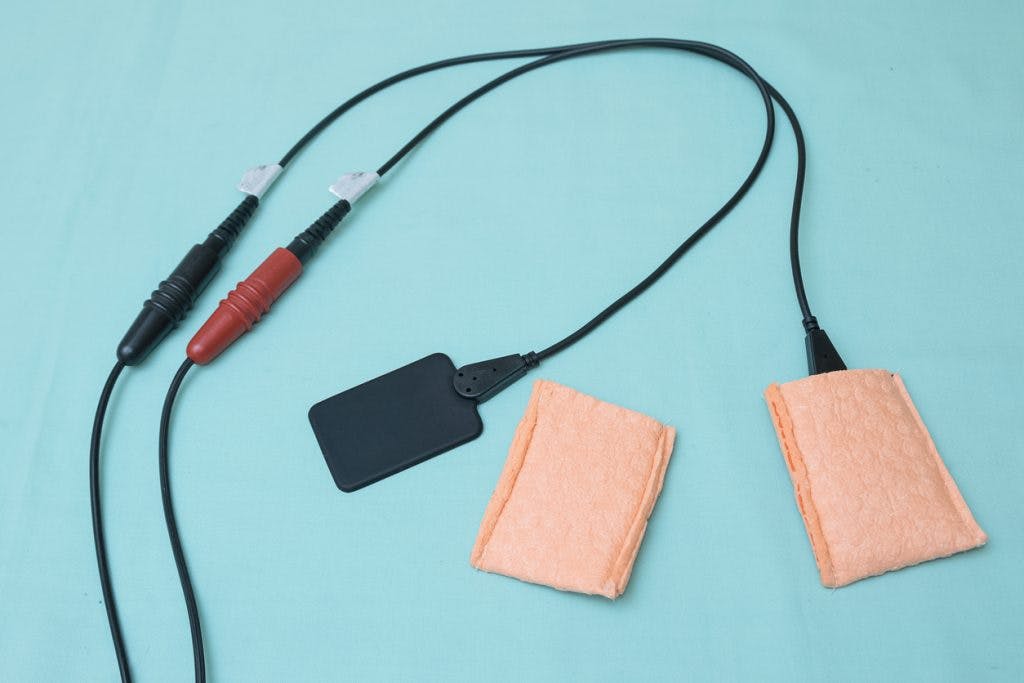No products in the cart.
No products in the cart.
No products in the cart.
No products in the cart.
Home » Neurological Recovery Blog » Traumatic Brain Injury » Excessive Sweating After Head Injury: Causes, Symptoms, and Treatments for Hyperhidrosis
Last updated on January 15, 2020

Excessive sweating after a head injury is a symptom of dysautonomia. This condition causes automatic bodily functions, such as sweating, to malfunction. This post will explore how dysautonomia causes increased sweating after head injury plus the best ways to manage it.
Dysautonomia refers to problems in the autonomic nervous system. The autonomic nervous system is a complex neural network involving the amygdala, hypothalamus, and brain stem, among other areas. It controls all involuntary bodily functions, such as:
If a brain injury damages the structures that control these functions, dysautonomia will occur. This can lead to multiple problems, including excess sweating.

The part of the brain most responsible for regulating body temperature is the hypothalamus. This structure contains heat-sensitive neurons that signal to the hypothalamus whether the body is too hot or too cold.
If the hypothalamus detects excess heat, it will trigger the body’s cooling measures. These cooling responses include:
When the hypothalamus is damaged, this process no longer works properly, which can cause the hypothalamus to think the body is overheating when it is not. When certain parts of the body start sweating more than they should, doctors call this hyperhidrosis.
Other causes of hyperhidrosis include thyroid dysfunction and anxiety disorders. Some medications such as propranolol for high blood pressure can also trigger increased sweating.
The signs of hyperhidrosis include:
People with hyperhidrosis usually experience certain side effects as a result of their sweating, such as:
Fortunately, excessive sweating can be effectively treated.
There are several ways to manage sweating after head injury. Some of these treatments are as simple as changing your daily habits, while others require the help of a doctor.

While deodorants do not stop sweat from forming, antiperspirants do. If your condition is not too severe, using an antiperspirant spray might be enough to get your sweating under control.
If regular antiperspirants don’t seem to have an effect, there are prescription-strength antiperspirants that contain aluminum chloride, which plugs the sweat glands. Ask your doctor if prescription antiperspirants are safe for you.
Sometimes simply changing your clothing material is enough to manage your sweating. Some changes you can make include:
If none of these treatments work, you may need more intensive treatments.

With iontophoresis, a device delivers mild electrical currents while your hands or feet are submerged in water. The current passes through the water into the skin, disabling the sweat glands underneath.
Doctors have used iontophoresis to treat hyperhidrosis since the 1940s. For people with extreme sweating on the hands, it is especially effective, with one study showing that it reduced perspiration by 92 percent.
There are no significant side effects to iontophoresis, and benefits are long-term as long as you keep up the maintenance schedule (usually once per week).
If hyperhidrosis affects other body parts besides your hands and feet, your doctor can hook up pads to let the current reach those areas. Iontophoresis is recommended for people who have already tried prescription antiperspirants and need something stronger.

Botox is another effective treatment for excessive sweating after head injury. The natural protein found in Botox temporarily blocks the secretion of the chemical messenger that triggers the sweat glands. By doing this, Botox effectively shuts down sweating in the area where it is injected. Botox’s effects can take up to two weeks to fully appear but will last between four to twelve months.
Studies have shown that Botox can result in an 87 percent decrease in underarm sweating and a 90 percent decrease in palm sweating. It also does not cause compensatory sweating in other body parts, unlike some other treatments. All this makes Botox one of the best treatments for hyperhidrosis.
Besides Botox and iontophoresis, there are a few oral medications that can help patients manage excess sweating. These medications are best suited for patients who have generalized hyperhidrosis i.e. excessive sweating over their entire body.
The most common medications used to treat hyperhidrosis include:
However, unlike the other treatments listed, these meds can have serious side effects. Therefore, make sure you consult with your doctor before starting any of them.
Hyperhidrosis after head injury is a frustrating condition that many people suffer from. However, it is very treatable. Too often, patients will go years before seeking help for their increased sweating. But there is no need to wait.
You can start seeing improvements as soon as you begin treatment. We hope this article helps you find the best ways to manage your sweating after brain injury.

If you like our content, you’ll love our ebook and newsletters! Get instant access to our TBI recovery tips ebook with 20 pages of helpful advice by signing up below.
You’ll also receive our emails that share survivor stories and more useful TBI recovery tips, which you can opt out of at any time. (We know you’ll love them, too.)
We will never sell your email address, and we never spam. That we promise.


Time with a speech therapist is extremely valuable during recovery, especially if you struggle with communication, critical thinking, or memory after brain injury. Insurance typically covers speech therapy for a fixed amount of time. But once it’s over, recovery is in your hands.
That’s why a team of neuroscientists and clinicians from Boston University created the CT Speech & Cognitive Therapy app. Designed for those recovering from stroke, TBI, or living with neurological conditions, the app contains over 100,000 cognitive exercises that are all available right from your phone or tablet. That’s like having a speech therapist by your side whenever you want!
This app is the perfect fit if you want to improve your speaking, memory, or general mental sharpness. And, it’s affordable at just $29.99/month!
“For the past 6 months, my son has used the app about three times a week. The app is like a virtual therapist, it’s very easy to use, and it gives him immediate feedback.
He now understands things faster, can make decisions with less hesitation, has improved recognition of words, and his confidence is higher. I also find it easy to get in touch with customer service; they pleasantly help out. The whole experience has been great.”
— Miriam
With the CT App, you can get the guidance you need right from your phone or tablet. You can use it on your own or in between sessions with your speech therapist.
Whether you struggle with aphasia, memory loss, or critical thinking, the CT Speech & Cognitive Therapy App can help.
“The CT app has helped me gather my confidence by building on and reinforcing old forgotten skills. It helps to see my percentages increase, and work harder when they decrease. It’s very self-motivating.” -Kathryn
We are confident that this app will help improve your speech and cognitive function after brain injury. Like our recovery tools, the CT App is also covered by our 30-day money-back guarantee.

Do you know these 15 TBI recovery tips?
Get a free copy of our ebook 15 Things Every TBI Survivor Must Know. Click here to get instant access.
Grab a free rehab exercise ebook!
Sign up to receive a free PDF ebook with recovery exercises for stroke, traumatic brain injury, or spinal cord injury below: